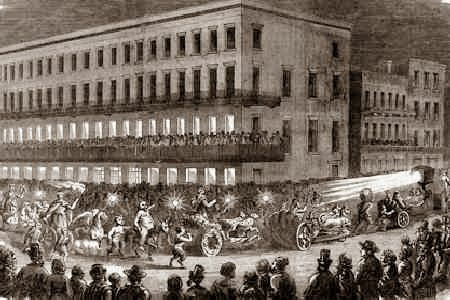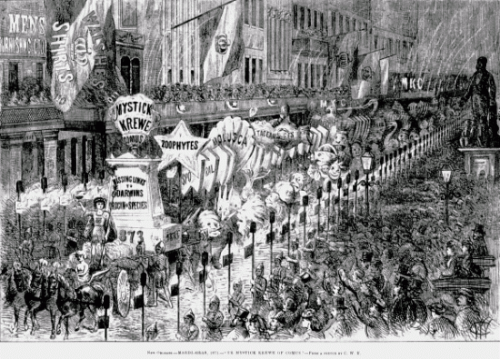|
Posted: 16 Feb 2015 05:55 AM PST
New Orleans has been celebrating Mardi Gras since the 1730s, but it took a hundred yearsbefore we began to see street processions. The first processions included carriages and maskers on horseback. The first floats appeared in 1856 with the formation of the first Mardi Gras krewe: the Mistick Krewe of Comus.
Enslaved and free men of color lit the spectacles with torches. They were called the flambeaux. Eventually, they became a spectacle in themselves, dancing for tips. In the historical engravings below from the 1850s, you can see men carrying torches among the festivities (Wikimedia Commons and the Library of Congress).    Today, there are still flambeaux carriers and they are still mostly black men. The tradition has been passed down through generations. In a video at nola.com, a flambeaux carrier named Herbert Long explains that he’s been carrying flame for 18 years, following “generations of [his] family.” Today they carry kerosene torches. These photos were taken by David Grunfeld for nola.com:     Unbelievably, the first white men to carry the flambeaux appeared in a parade in 1969, something I’ll talk about tomorrow. Meanwhile, the first ever all-female flambeaux troupe, the glambeaux, debuted in 2014 (images from @dmassawwl, wduv, and pspo on tumblr).    Today, the flambeaux are a beloved part of the Mardi Gras tradition, good and bad. From one parade to 68. That is the story for tomorrow. Lisa Wade is a professor of sociology at Occidental College and the co-author of Gender: Ideas, Interactions, Institutions. You can follow her on Twitter and Facebook.(View original at http://thesocietypages.org/ |
2015년 2월 16일 월요일
Sociological Images: Seeing Is Believing
피드 구독하기:
댓글 (Atom)
댓글 없음:
댓글 쓰기